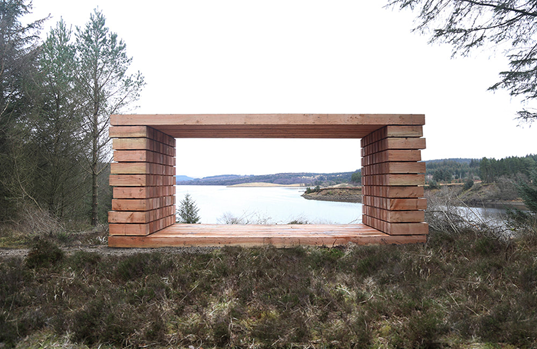Timelapse is one of the dwell point shelters and sculptures which sit on the Lakeside Way.

Located on the south shore, on the south side of the Bull Crag peninsula. It is a structure that invites visitors to take in the view, and while there, ponder the slippery nature of time passing.
What 3 Words: incensed.mended.survive
Timelapse can be accessed from either Tower Knowe visitor centre or Kielder Waterside.
From Tower Knowe, travel west along the Lakeside Way for approximately 2.75 miles (4.3 km).
From Kielder Waterside, using the Bull Crag shortcut from near Freya’s Cabin, the distance is just over 2 miles (3.5 km). Alternatively, by taking the full Lakeside Way circuit around Bull Crag from Kielder Waterside, you will arrive at Timelapse after about 4.5 miles (7 km). It is a further 2 miles (3.5 km) to return to Kielder Waterside.
About 2.5 miles across on the north side of Bull Crag peninsula is Freya’s Cabin. A further mile to Kielder Waterside, you will find Human Burrow, Shadow, Shapling, Mapping Minigolf and Tethered Cloud.
In describing his proposal, David Rickard says:
'The sculpture ‘Timelapse’ arrives from the underlying materials that define Kielder; timber and time.
With trees typically growing in Kielder Forest for several decades before harvest the forest itself reflects various timespans through the scale of the trees in different plantations. This layering of time in the landscape is also present within the growth rings buried within the timber of individual trees. Once trees are felled, time continues to govern the production of timber as a period of seasoning or drying is required before it can be put to use. A process often fast-forwarded with kiln drying, but traditionally taking several months or even years with the wood carefully stacked to allow air circulation.
As visitors approach ‘Time-lapse’ their first impression might be of a large stack of timber drying within the heart of the forest. Harvested at Kielder, this neat mass of timber embraces the materiality of the forest whilst also forming a minimal sculpture in juxtaposition to the surrounding landscape.'
